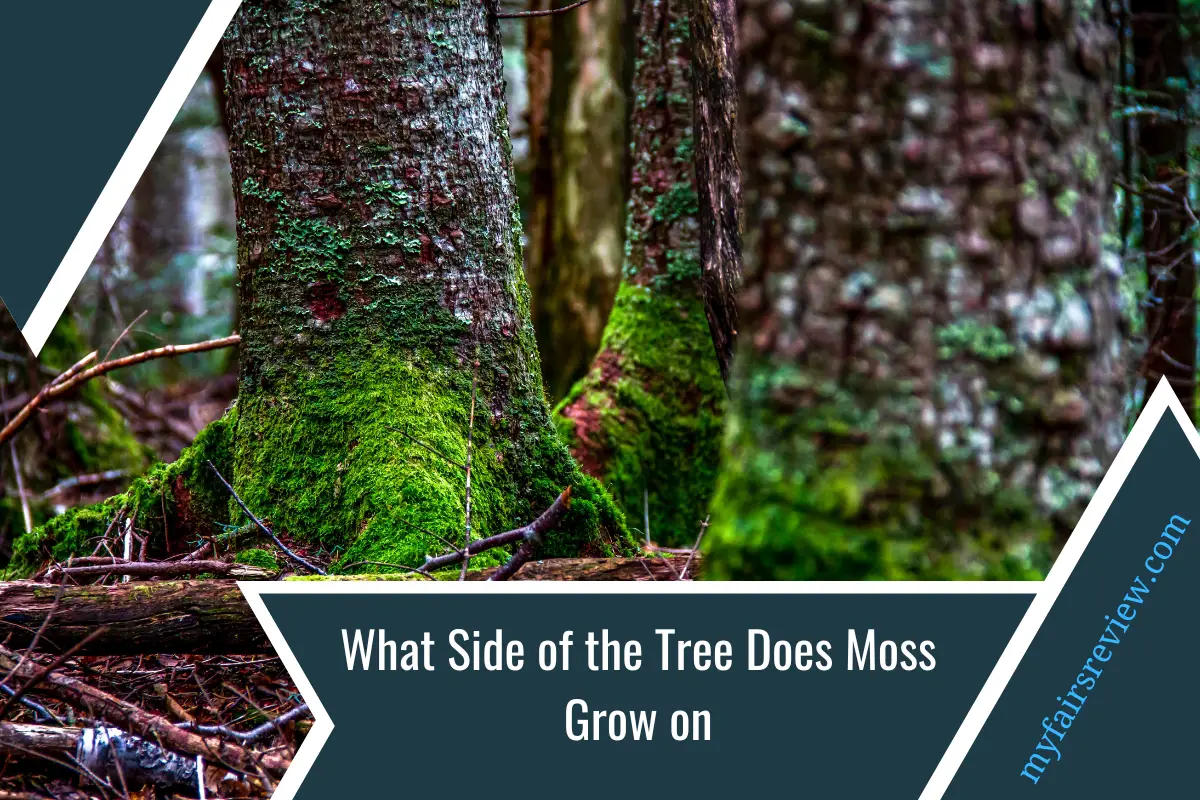Moss typically grows on the north side of trees. Moss prefers cool and shady environments.
In the natural world, trees are not only majestic and grand, they also harbor a remarkable array of life, including moss. Moss, a unique type of non-vascular plant, thrives in cool and damp conditions. Yet, have you ever wondered if there is a specific side of a tree where moss tends to grow?
It turns out that moss is particularly fond of the north side of trees. This preference can be attributed to the fact that the northern side receives less sunlight, creating a cooler and damper environment, which moss finds favorable for its growth. We will delve into the fascinating world of moss and explore why it tends to gravitate towards the north side of trees. So, let’s uncover the secrets behind moss and its predilection for the shade.
The Basics Of Moss Growth On Trees
Moss growth on trees is influenced by various factors. These factors include the amount of sunlight a tree receives, its moisture levels, and the presence of other plants competing for resources. Understanding the relationship between moss and trees is crucial in comprehending why moss grows on certain sides of the tree.
Different types of moss can commonly be found on trees, such as cushion moss, sheet moss, and fern moss. Each type has unique characteristics and preferences in terms of moisture and shade. By considering these factors, we can gain insight into why moss tends to grow more abundantly on the north side of trees.
This knowledge helps us appreciate the delicate balance between nature and the environment in which trees and moss thrive.
The Sunlit Side: Where Moss Thrives
Moss is a fascinating plant that thrives on the sunlit side of trees. Sunlight plays a crucial role in its colonization, as moss prefers shady areas with limited access to direct sunlight. Microclimates also influence the distribution of this unique plant.
Moss tends to grow in areas with high moisture levels and relatively cooler temperatures. These microclimates can be found on the north or east sides of trees, where they are shielded from intense sunlight. By examining the preferred conditions for moss growth, we can better understand how this plant adapts to its environment.
Understanding the interplay between sunlight, microclimates, and moss colonization offers insight into the intricate dynamics of nature. So next time you come across a tree covered in moss, take a moment to appreciate the delicate balance of conditions that allow it to thrive.
The Shady Side: The Curious Case Of Moss Absence
The curious case of moss absence on the shady side of trees sparks exploration into its causes. The competition for resources among plants and shading inhibition play a significant role in limiting the growth of moss. Microenvironmental variations, such as reduced sunlight and higher moisture levels, also affect the development of moss in these shaded areas.
Moss requires specific conditions to thrive, including direct exposure to sunlight and access to moisture. In the presence of a shading tree, these conditions are compromised, leading to a scarcity of moss on the shady side. Understanding the factors that contribute to moss growth patterns enhances our knowledge of how different environmental elements interact with plant life.
Exploring this phenomenon sheds light on the intricate nuances of nature’s delicate balance.
How Moss Orientates On Tree Trunks
Moss growth orientation on tree trunks is influenced by gravity and moisture. Moss tends to align in a specific direction along the bark. Gravity plays a role in determining the downward orientation of moss, while moisture availability contributes to colonization on different sides of the tree.
This directional alignment can be analyzed by studying the patterns and distribution of moss on tree trunks. Understanding these factors can provide insights into how moss establishes and thrives on trees. By observing the moss growth patterns, researchers can gain a deeper understanding of the ecology and biology of these organisms.
The study of moss growth orientation on trees helps shed light on the intricate relationship between plants and their environment, showcasing the fascinating adaptations of nature.
The Intriguing Patterns: Moss On East And West-Facing Trees
The growth patterns of moss on east and west-facing tree bark have captivated researchers. The amount of sunlight exposure plays a crucial role in moss establishment. Comparing the dominating moss species on each side reveals interesting differences. The east-facing side tends to have more shade and moisture, promoting the growth of shade-loving moss species.
On the other hand, the west-facing side receives more direct sunlight, leading to the dominance of sun-loving moss species. This stark contrast highlights the adaptive abilities of moss and how they respond to varying environmental conditions. Understanding these patterns could provide insights into the distribution and ecology of moss species and their role in forest ecosystems.
The investigation of moss growth on different sides of trees continues to uncover fascinating discoveries in the world of natural sciences.
Nature’S Art: Moss As An Indicator Of Environmental Conditions
Moss, a fascinating organism, serves as a bioindicator of air pollution and local climate conditions. Its growth on trees is a natural art that can reveal valuable insights into environmental conditions. As moss thrives in specific habitats, its presence or absence on a tree can indicate the health of the surrounding air and the prevailing climate.
Moss tends to flourish in areas with clean air and adequate moisture, while its absence may suggest pollution or dry conditions. By examining the ecological significance of moss growth on trees, scientists can better understand the impact of air pollution and climate change on our environment.
The correlation between moss presence and local climate conditions helps researchers gather valuable data to assess the health of ecosystems and develop strategies for conservation. Through the study of moss growth on trees, we gain a deeper appreciation for the interconnectedness of nature and its ability to serve as an indicator of environmental well-being.
Harnessing The Beauty: Incorporating Moss In Landscapes
Moss, nature’s delicate carpet, can enhance outdoor aesthetics with innovative landscaping projects. Its sustainable nature adds to the allure, making moss gardens a popular choice. When incorporating moss, consider some essential tips for a successful outcome. Begin by choosing the right location for your moss garden, ensuring it receives the appropriate amount of sunlight and moisture.
Using different varieties of moss can create an enchanting tapestry of colors and textures. To maintain the moss’s health, avoid walking on it and provide regular misting to mimic natural humidity. Additionally, moss can be used to cover rock walls, add texture to pathways, or create moss terrariums.
With its tranquil beauty and eco-friendly characteristics, moss is becoming a favored element in the world of landscape design.
Frequently Asked Questions For What Side Of The Tree Does Moss Grow On
Why Does Moss Only Grow On The Northside?
Moss tends to grow on the north side due to more shade and moisture there.
Does Moss Grow On The Sunny Side Of A Tree?
Yes, moss can grow on the sunny side of a tree.
Can You Navigate With Moss?
No, you cannot navigate with moss because it does not provide reliable direction guidance.
What Is Tree Moss Good For?
Tree moss is beneficial as it helps retain moisture, absorbs pollutants, and provides habitat for insects and animals.
Conclusion
Understanding the role of moisture and sunlight in moss growth is essential to knowing which side of a tree moss will thrive on. Moss tends to favor the north side of trees because it receives less sunlight, creating a moister environment.
The north side also harbors more shade and protection from potential threats, including intense heat and wind. However, it’s important to note that other factors can influence moss growth, such as the presence of nearby water sources and the type of tree.
While moss may predominantly grow on the north side, it can still be found on other sides of a tree, albeit in smaller quantities. Observing moss growth patterns can provide valuable insights into local climates and microenvironments. So, the next time you stumble upon a tree with a lush covering of moss, take a moment to appreciate the natural beauty and scientific dynamics at play.
Happy moss-spotting!



